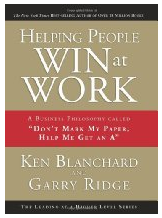Applying lean agile techniques
The growing popularity in Lean Agile techniques compel us to reassess how we can use the various tools presented by these relatively recent additions to our “management toolboxes.”
In today’s world of nearly “instant” everything, we tend to drive decisions based on “gut feelings”, or simply in reaction to requests or directives. Too often we are forced to do this due to external forces we don’t control, regardless of the impact those decisions may have.
This approach can derail our intentions to reach longer-term strategic objectives.
 For example, the Agile Strategy Execution Framework presented by ASM.com mentions two key processes that help drive more “agility” into achieving strategic success. Those are “Sprint Decisions” and “Group Retrospectives”.
For example, the Agile Strategy Execution Framework presented by ASM.com mentions two key processes that help drive more “agility” into achieving strategic success. Those are “Sprint Decisions” and “Group Retrospectives”.
Both of these processes utilize the collaboration of cross-functional groups in achieving their respective goals.
Systems Thinking supports lean agile techniques
It is valuable to note that ensuring the right type of “thinking” needs to be practiced throughout the framework model, and that means using “Systems Thinking”. This “systemic”, or “holistic”, approach to applying this framework is part of the “secret sauce” to being effective and successful in reaching your strategic objectives.
If the term “Systems Thinking” sounds new to you, be assured it is not. Peter Drucker’s mentors in Vienna, Austria are considered to have shepherded Systems Thinking from the physical sciences into business management. Drucker then refined and articulated its applications. Many of the greatest organizations and businesses of today have been practicing Systems Thinking and teaching it for decades. For a brief overview, click here for an article about it.
Both the “Sprint Decisions” and “Group Retrospectives” outlined by ASM.com can benefit from the organization and facilitation techniques drawn from General Electric’s “Work Out” concepts. Whether teams are working on problems in design, process, operational, behavioral or cultural issues, their solutions will be more clearly articulated, more effectively measured and adjusted to with greater agility.
By working out issues in the collaborative, cross-functional teams, both deep dive activities and small bets can produce solutions that are better aligned with longer term objectives and create greater value for the customer and the business.
A lean agile techniques we use is what we call “Sprint Workouts.” These cross-functional team meetings are half to one or two full days in length. The meetings are focused on specific outcomes and support at least one strategic initiative whose results can be measured and communicated quickly and effectively. The stakeholders are clearly identified prior to the meeting and informed of the intent of the Sprint Workout. This produces buy-in and stay-in for quick solutions.

